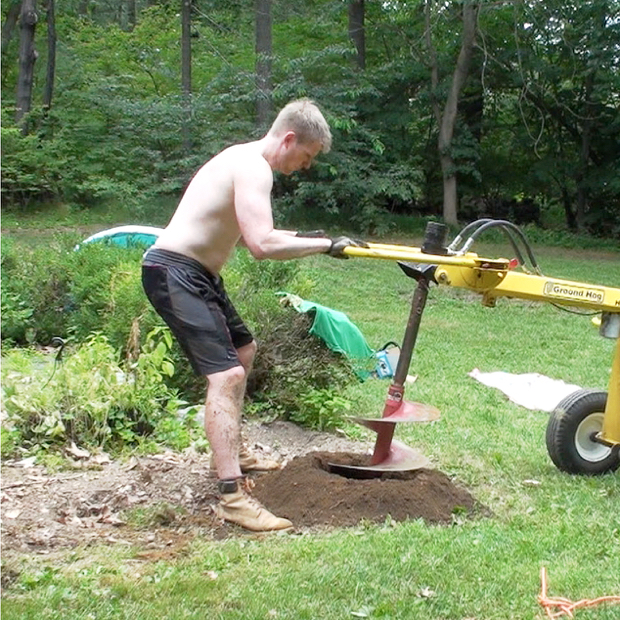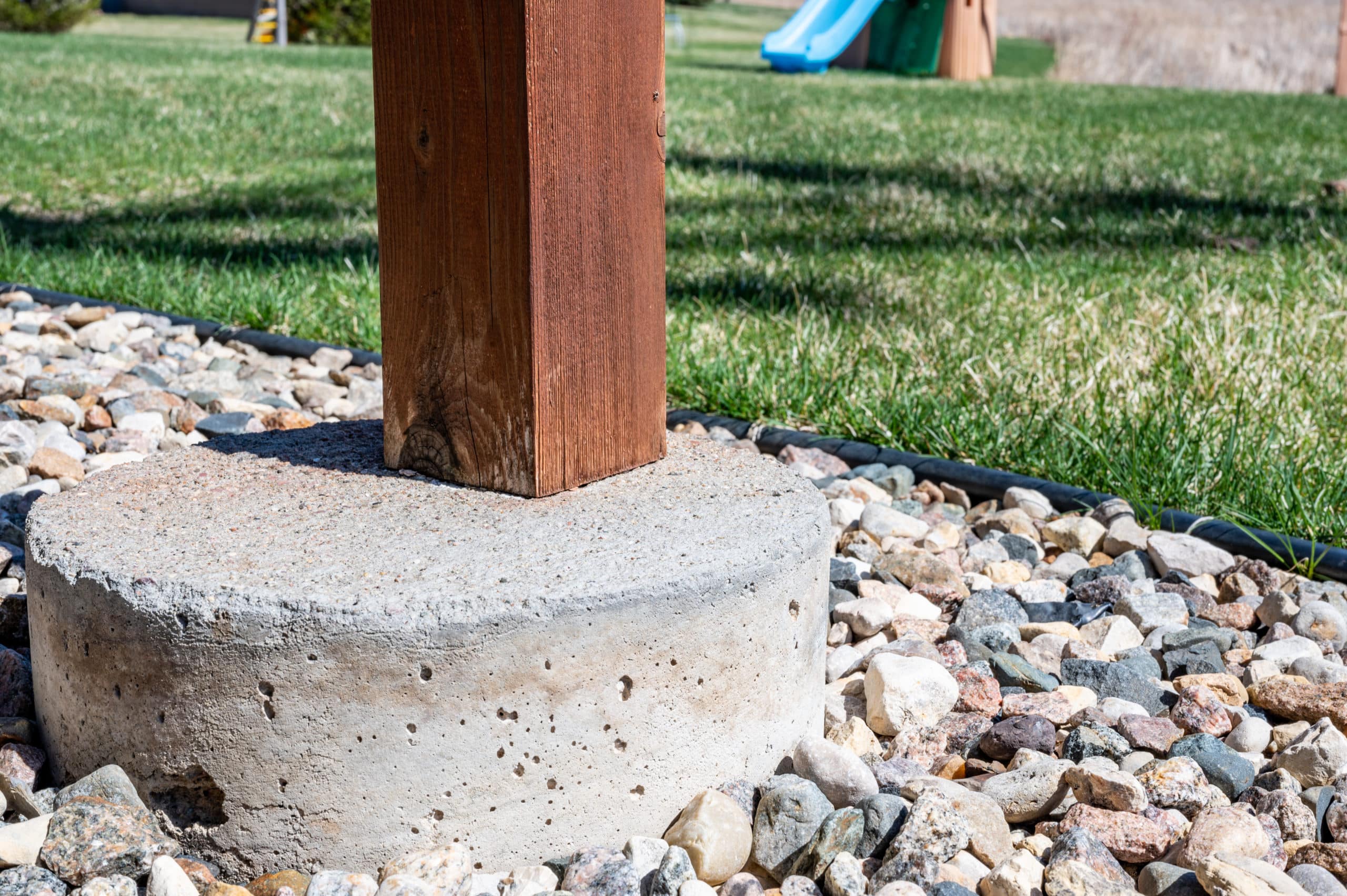Deck Footings 101: Browsing the Fundamentals for a Stable and Long Lasting Deck
Deck Footings 101: Browsing the Fundamentals for a Stable and Long Lasting Deck
Blog Article
Maximize the Lifespan of Your Deck With Reliable and Solid Footings
In order to fully optimize the life-span of your deck, it is crucial to guarantee that it is developed on trustworthy and solid footings. These footings develop the structure of your deck, giving stability and support, and are frequently the difference between a deck that lasts for decades and one that requires constant repairs. In this discussion, we will explore the significance of dependable footings, the different types of solid ground products, appropriate setup methods, and exactly how to preserve and inspect your deck's footings to prevent damages.
Relevance of Trusted Grounds
The relevance of dependable footings can not be overemphasized when it involves making the most of the life expectancy of your deck. The footings act as the foundation upon which the entire structure rests, offering stability and support. Without a solid footing, the deck is susceptible to shifting, sinking, and even collapse, which can considerably decrease its life expectancy and position security dangers.

Picking the right type of footing is likewise vital. Working with a professional to evaluate the soil, style the footings, and guarantee appropriate setup is extremely advised.
Spending in reliable footings might entail added price and effort upfront, however it is a beneficial investment that will contribute to the long-term resilience and safety of your deck. By guaranteeing a strong structure, you can enjoy your deck for several years to find, knowing that it is built to hold up against the examination of time.
Sorts Of Solid Ground Materials
To ensure the security and long life of your deck, it is necessary to think about the different types of solid footing materials readily available. The selection of footing material is essential as it provides the essential support and stability to hold up against the weight and tons of the deck structure.
One trusted and typical product used for deck grounds is concrete. Concrete footings are long lasting and provide exceptional security.
For areas with inadequate soil conditions, such as loose or large soils, a footing system that makes use of steel or composite piers may be chosen. Deck Footings. These piers are driven deep right into the ground to reach steady dirt layers, ensuring the stability of the deck
In many cases, deck footings can also be built making use of cured lumber. However, it is crucial to ensure that the lumber is correctly dealt with to stand up to rot and decay caused by exposure to wetness and pests.
When picking a ground product for your deck, it is essential to think about aspects such as dirt problems, environment, and neighborhood structure codes. Consulting with a specialist service provider or structural engineer can help determine the most ideal footing material for your particular deck job.
Appropriate Setup Methods for Footings
Thinking about the value of making sure stability and sturdiness for your deck, it is necessary to recognize the appropriate setup methods for footings. The success of your deck job depends heavily on the integrity of its structure, which is why following the correct installment techniques is crucial.
Firstly, it is needed to identify the appropriate dimension and deepness of the footings based on the layout and tons demands of your deck. This information can be obtained from building codes or via appointment with an architectural engineer. As a basic policy, footings should go to least 12 inches in diameter and expand below the frost line to prevent changing or clearing up.
When the dimensions are developed, the next action is excavation. Digging the openings for the footings must be finished with accuracy, making sure they are deep enough and have a degree bottom. Deck Footings. This will certainly offer a secure base for the footings
To better improve the security of the footings, it is advised to utilize a concrete blend with a stamina of at the very least 3,000 psi. This will ensure the footings can hold up against the weight and forces applied by the deck.
During installment, it is necessary to maintain the footings level and straightened correctly. This can be attained i was reading this by utilizing a level and string lines to lead the placement of each ground.
Maintaining and Checking Your Deck's Grounds
Regular maintenance and thorough assessments are crucial for guaranteeing the lasting security and safety of your deck's footings. With time, grounds can catch use and tear, weather conditions, and dirt activity, which can compromise their structural integrity. To optimize the lifespan of your deck's footings, it is vital to apply a regular maintenance routine and conduct extensive assessments.

Furthermore, it is essential to inspect grounds for any indications of damage or deterioration. This includes checking for fractures, splits, or collapsing concrete, along with any signs of activity or negotiation. Any type of problems ought to be dealt with without click for source delay to avoid additional damages and make certain the stability of the deck.
Moreover, it is advised to inspect the surrounding dirt for any kind of indicators of erosion or changing. Dirt movement can affect the stability of the grounds, so it is essential to address any check out this site type of soil-related problems immediately.
Indicators of Ground Damages and How to Address Them
An additional indication of footing damages is falling apart or fracturing of the concrete footings. If you observe any type of fractures or deterioration in the footings, it is vital to have them examined and repaired by an expert. Keep in mind, attending to ground damage immediately can aid ensure the long-lasting stability and security of your deck.
Verdict
To conclude, ensuring the integrity and toughness of footings is vital for optimizing the life expectancy of your deck. By utilizing strong ground materials and properly mounting them, you can stop damage and keep the stability of your deck. Normal maintenance and examinations will additionally assist recognize any type of indicators of footing damage and enable for prompt repair work. Inevitably, taking these steps will certainly aid preserve the stability and long life of your deck.
These grounds develop the foundation of your deck, supplying stability and support, and are typically the difference between a deck that lasts for years and one that calls for consistent fixings. In this conversation, we will explore the importance of dependable grounds, the various types of solid ground materials, proper installment strategies, and exactly how to keep and evaluate your deck's footings to prevent damages.Regular upkeep and complete evaluations are essential for ensuring the long-lasting stability and safety and security of your deck's grounds. Keep in mind, dealing with footing damages promptly can assist ensure the long-lasting security and safety of your deck.
By utilizing solid ground products and properly installing them, you can stop damages and keep the security of your deck.
Report this page